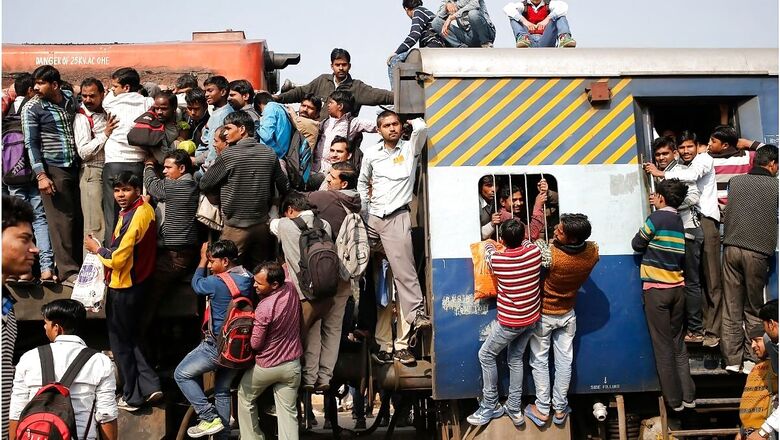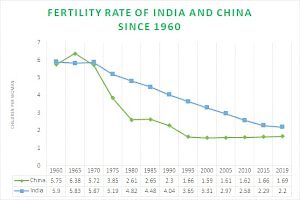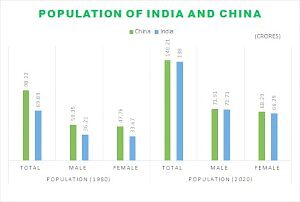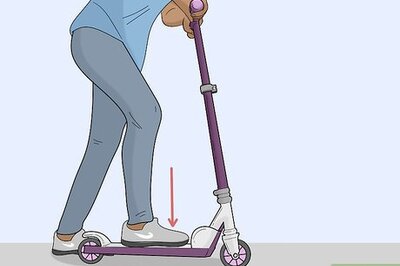
views
Even though China had a strict one-child policy to check its population growth, India’s birth and fertility rates dropped much more than that of its neighbour since 1980. China’s fertility rate, when the one-child policy was introduced in 1980, was 2.61 children per woman. This has dropped to 1.69 children per woman in 2019, according to the World Bank Group data. From 4.82 children per woman in 1980, India’s fertility rate has dropped to 2.2 in 2019. While China reported a drop of over 35% in the fertility rate, India recorded a drop of 54% during the same period, the data analysed by CNN-News18 shows.
Similarly, while China’s birth rate dropped by more than 42%, that of India has dropped by more than half since 1980. India’s birth rate in 1980 was 36.16 per 1,000 people that dropped to 17.64 in 2019. On the other hand, the birth rate in China dropped from 18.21 per 1,000 people to 10.5 during the same period, the data shows.

Birth rate of India and China since 1960
The drop in the birth rate in India was more consistent and steeper when compared to China. The gap between the birth rate of the two countries has also narrowed over the years.
Total fertility rate is the average number of children born to a woman in her reproductive years and birth rate is the number of individuals born in a population in a given amount of time.
China introduced the one-child policy in 1979. It switched to two-child policy in 2016. Now, the country has allowed couples to have three children after the census data showed a steep decline in birth rate.
What was China’s one-child policy and why was it introduced?
China introduced its one-child policy as the country was concerned that the growing population would impede economic progress.
China’s birth rate in the 1960s was 43.37 per 1,000 people, according to the World Bank data. This dropped to 18.21 in 1980, when the policy was introduced.
The policy implementation was strict and families that violated the rules faced fines, loss of employment and even forced abortions. In rural areas, families were allowed to have two children if the first was a girl. Two or more children were allowed for ethnic minorities.
China, in 2013, allowed couples to have a second child if either parent was an only child, while phasing out the one-child policy. In 2016, China allowed married couples to have two children.
The country scrapped its decades-old one-child policy due to multiple reasons. One of the reasons was the dropping fertility rate. The fertility rate in China has stood below replacement level fertility of 2.1 since 2000. Replacement level fertility is the level at which a population exactly replaces itself from one generation to the next. So, for the population in a given area to remain stable, an overall total fertility rate of 2.1 is needed.

Fertility rate of India and China since 1960
Another reason for scrapping the one-child policy was the fear of China’s shrinking workforce. According to the latest census data, Chinese people aged 60 or above accounted for 18.7% of the country’s total population in 2020, 5.44 percentage points higher than that in 2010.
The country felt the increasing elderly population will reduce supply in the labour force while increasing the burden on families’ elderly care and the pressure on the supply of basic public services.
It is believed that the one-child policy led to forced abortions, female infanticide, and the under-reporting of female births. It was also implicated as a cause of China’s gender imbalance. In 1962, the number of boys born per girl was 1.07. This increased to 1.17 in 2007 – that means about 117 boys were born for every 100 girls born.
In 2019, the global male birth per female birth was 1.06. China is believed to have one of the most skewed sex ratios in the world – 1.12 boys born per girl.
This year in May, China further relaxed its family planning policy and announced it will be supporting couples who wish to have a third child after the census data showed population growth slipping to its slowest rate since the 1950s.
China’s annual population growth rate in 2020 was 0.31%. It has dropped by more than 75% since 1980. The annual population growth of India has also dropped to more than half since 1980 — from 2.32% to 0.98%.
However, the population of India has nearly doubled since 1980 while that of China has increased by 42%.

Population of India and China
Read all the Latest News, Breaking News and Coronavirus News here.




















Comments
0 comment